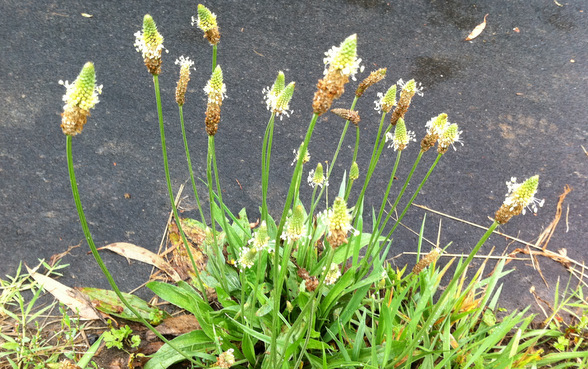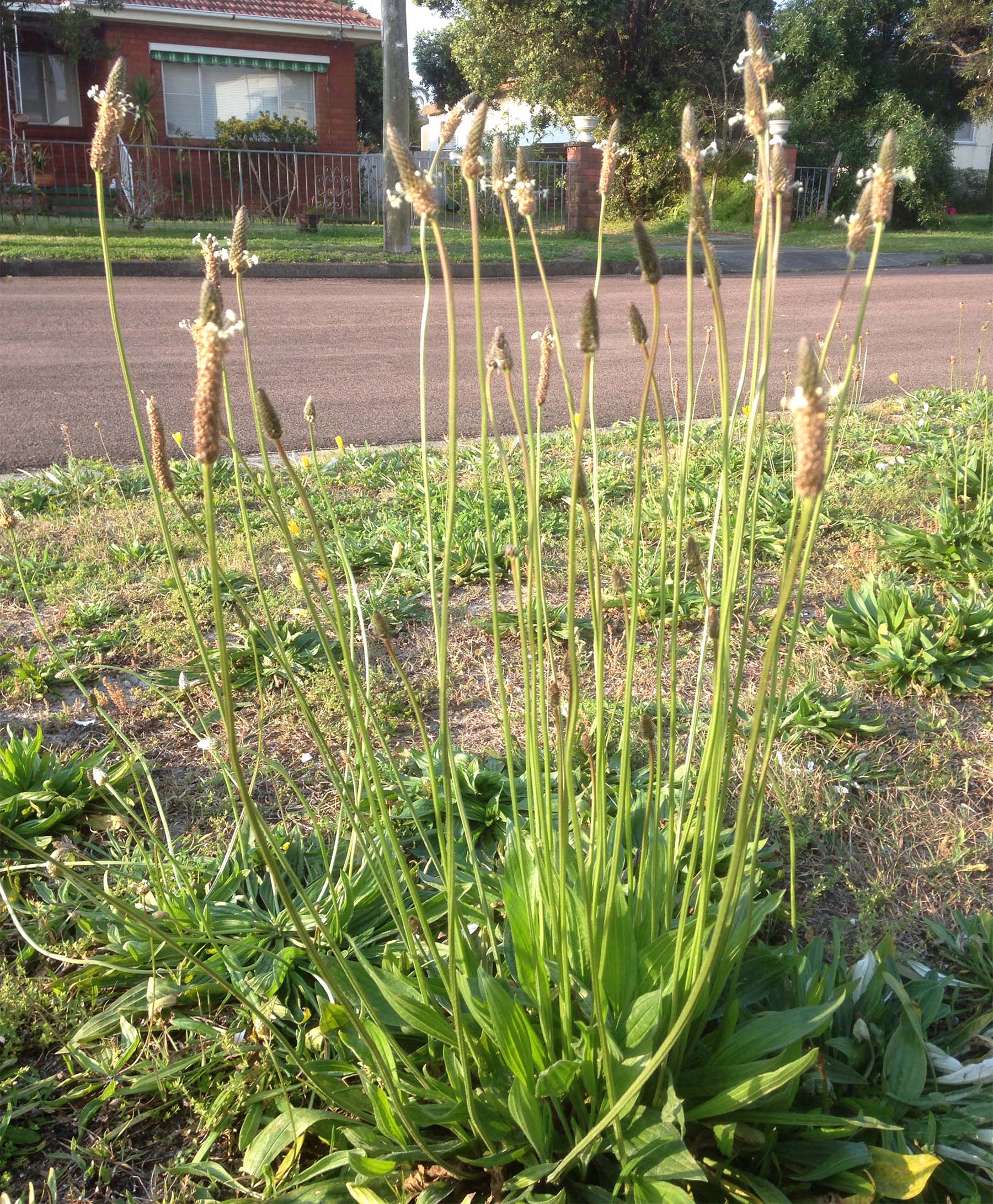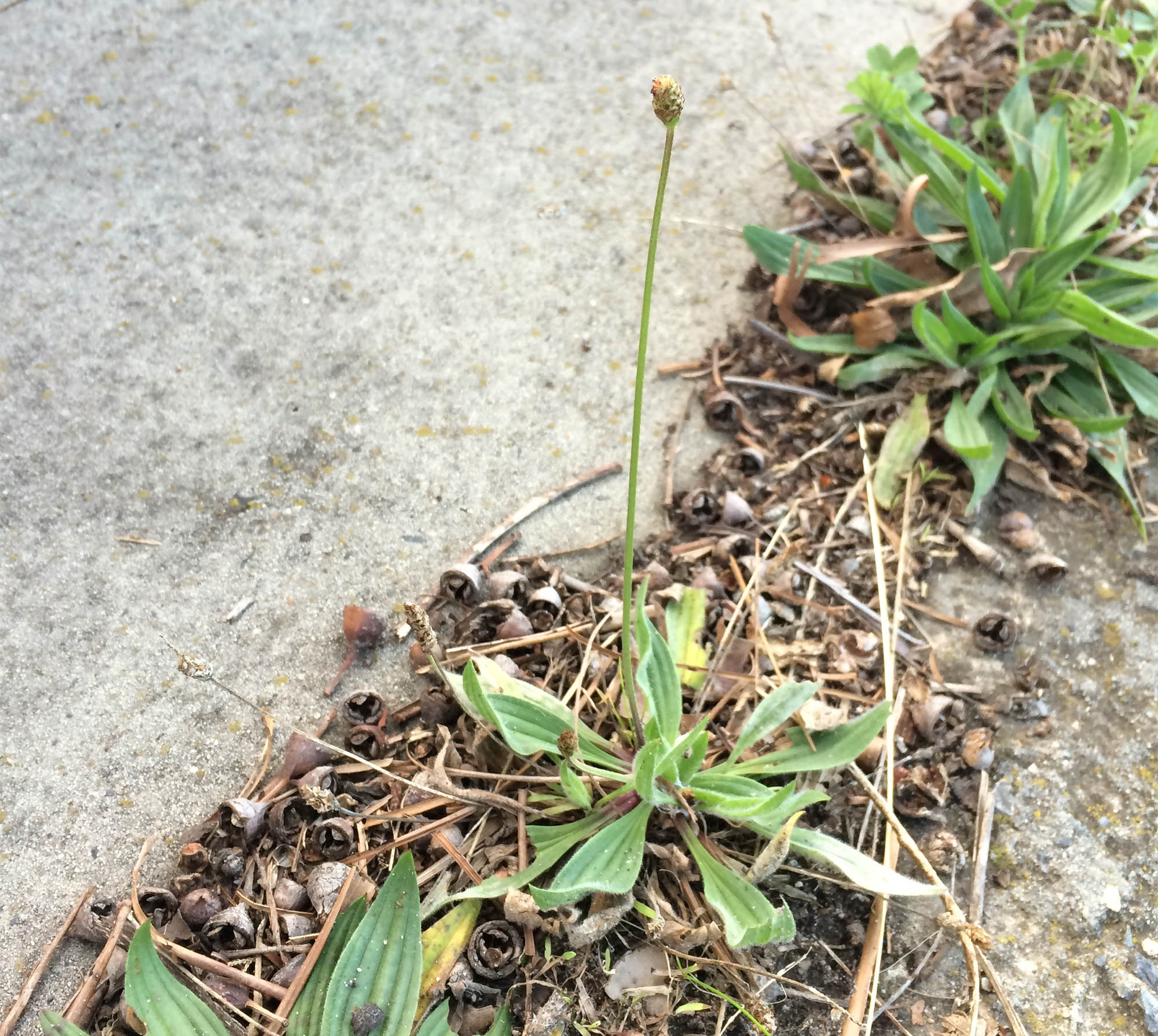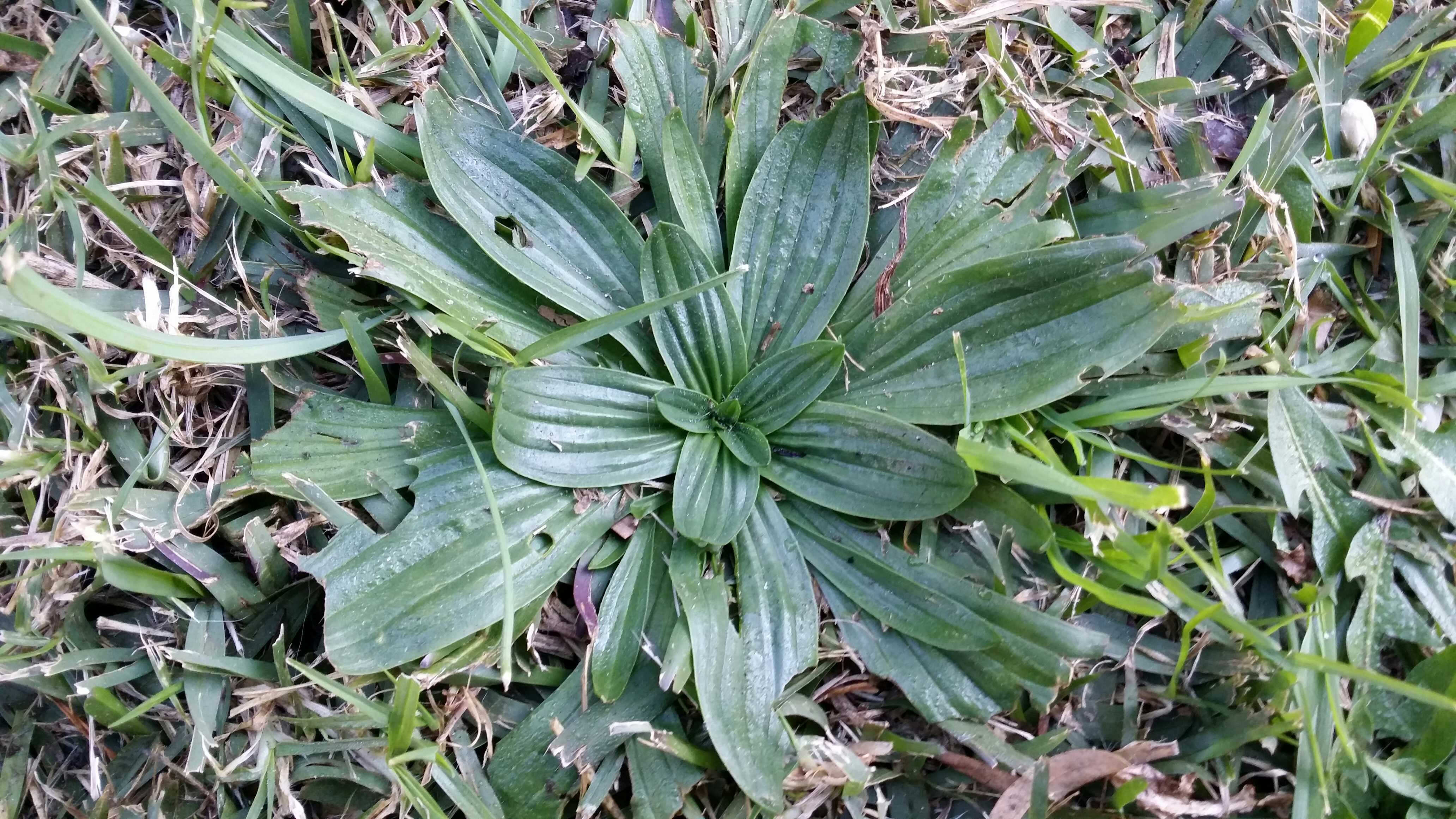Fruits/Seeds
A black to brown seed pod, 3 – 4 mm long contains 1 – 2 yellow to pale brown seeds.
Field Guide
Improve your identification skills. Download your Ribwort Plantain field guide here!

A tussock-like, rosette plant. Tussock size up to 30 cm high and wide with a flower stalk up to 1 m high.
Long, sword-shaped and forming a clump. Each individual leaf is 8 – 20 cm long and 1 – 3 cm wide and usually stands upright. There are 5 veins running down each leaf.
Small and initially cream, but turn brown rapidly. They grow on top of a ridged, 1 m high flower stem growing from the centre of the tussock of leaves. The flowers form a tight, cylindrical cluster which is 1 – 7 cm long.
A black to brown seed pod, 3 – 4 mm long contains 1 – 2 yellow to pale brown seeds.
Improve your identification skills. Download your Ribwort Plantain field guide here!

First fully open single flower
Full flowering (record all days)
End of flowering (when 95% of the flowers have faded)


Variable Plantain (Plantago varia) leaves usually have a toothed or jagged edge (not smooth like the Ribwort Plantain) and there is a dense tuft of reddish-brown hairs at the base of each leaf. Its flower stem can be shorter, only growing to a height of about 36 cm.